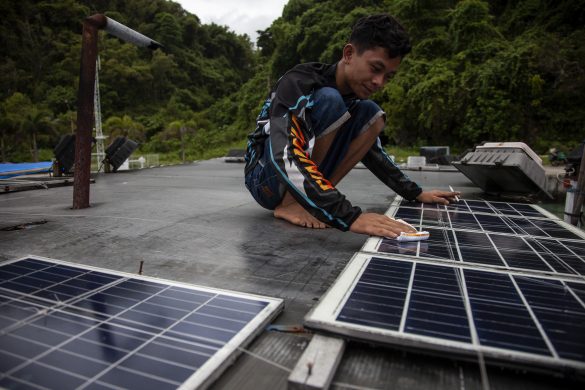UN report: Disparity widening in Asia
BANGKOK, 8 October: Not a single country in the Asia-Pacific region is considered well on the track to meet all targets of the Millennium Development Goals (MDGs), while inequality in various aspects is widening between and within countries, according to a United Nations report released here Monday.
The report, accessing progress in the Asia and the Pacific region to meet MDGs in 2007, the mid-point towards the target year of 2015, states that the region has in general made good progress in terms of reducing population living in extreme poverty by half, attaining universal education, and achieving gender equality in education.
HOWEVER, the region is left behind in areas of child mortality and malnutrition, maternal health, access to safe drinking water and sanitation facilities, even when compared with Latin America and Sub-Saharan Africa, says the report.
The report is a joint work by the UN Economic and Social Commission for Asia and the Pacific (UNESCAP), the Asian Development Bank (ADB), and the UN Development Program (UNDP).
The region accounts for about 65 percent of the worlds underweight children under the age of five, with a 28 percent rate, while the child mortality sees six out of every 100 children under five die every year, which almost double that of Latin American and the Caribbean. The most serious problems are in South Asia.
Maternal deaths in Asia and the Pacific account for almost half of the global total. The regions overall maternal mortality ratio (mødredødelighed), at over 300 per 100.000 live births, is more than 30 percent higher than in Latin America and the Caribbean.
Across the Asia-Pacific region, over 560 million people in rural areas lack access to improved water sources; over 1,5 billion people are living without basic sanitation facilities, nearly three-quarters of the global total.
The report also warns of a widening disparity inside countries. For example, percentage of underweight children in Chinas metropolis like Beijing and Shanghai is close to zero while in the less developed western province of Qinghai the rate is almost six percent, statistics as updated as 2005 by international agencies reveals.
Another indicator measuring income inequality called Gini-index reflects that in the past decade or so, out of 20 countries in the region, 14 have seen inequality rise.
The Gini index is based on a value standard varying over a spectrum from 0 to 100 points corresponding respectively to absolute equality and one household taking everything.
The steepest increase was in Nepal, where the Gini index rose by more than nine points.
It was followed by China, which has been praised as leading achiever in the area of halving extreme poverty, with an increase of more than six points. Both Nepal and China has recorded an index of close to 50 points through 1990s to 2000s, approaching the level in Latin America.
Although this inequality as reflected by the Gini index evaluates only the income factor, which might not always be the most important measure of well-being, said experts, it reveals that a high economic growth rate does not necessarily guarantee all people would be benefited in an equal base.
The report calls for a global partnership to make up the gap between and within countries, including enhancing south-south cooperation through economic and technical assistance and removing trade barriers in improving access for developing countries to developed markets.
The eight MDGs, agreed to by all nations in the world, include halving extreme poverty to reducing child mortality, halting spread of HIV and AIDS, providing universal primary education and providing access to clean drinking water and sanitation facilities by the year 2015.
The UN agencies started launching updated progress report towards the MDGs since 2003.
Kilder: Xinhua General News Service og The Push Journal















